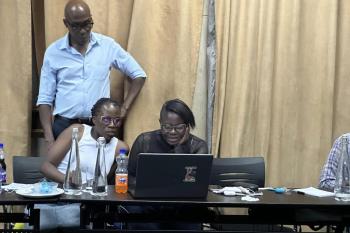
Landesa: Four Proven Innovations to Provide Secure Land Rights
The following blog is taken from the remarks of Landesa Founder Roy Prosterman made today before the European Parliament's High-Level Conference on Property Rights: The Missing Key to Eradicating Poverty.
When we are dealing with complicated, stubborn and large-scale problems, we often think that the solution will be, by necessity, expensive, labor intensive, and time consuming.
But Landesa's experience in more than 50 countries over the last four decades indicates that this is not always the case.
In fact, through our work and in collaboration with our partners, we've discovered a number of cost effective ways to improve land rights for large numbers of people.
My remarks will focus on four of these promising innovations that are field tested, financially and politically feasible, and effective in providing the rural poor with that critical tool they need to begin the climb out of poverty - land rights:
- Distribution of small house-and-garden plots to the landless poor in developing countries.
- Use of legal (and para-legal) aid and education to assist the rural poor in full enjoyment of land property rights they already have under the law.
- Significantly further women's realization of land property (and other) rights they already have in law by promoting their membership/electability to customary/informal local dispute resolution bodies.
- Mobilize new and low-cost technologies in titling/documentation programs.
(1) Micro-plots
Micro-plots are tennis-court-sized home-and-garden plots of land. On these one-tenth of an acre plots, families can produce most of the vegetables and fruits they need and sell excess produce to supplement the family's other earnings. Their big impact belies their small size.
They were developed based on research that shows that secure rights to even a small area of land boosts family income, enhances family nutrition, provides physical security, provides bargaining leverage to farm hands who otherwise have to live on their employer's property, serves as a vehicle for generating wealth, offers space for a home business or post-harvest storage, and secures the family's status in the community.
Micro-plots are developed with what is typically the family's most abundant resource-their own labor.
And micro-plots are small enough that even governments with constrained coffers can afford to pay market prices to purchase sufficient quantities of land from willing private sellers and distribute it to their rural poor.
Using the micro-plot approach, governments can provide huge benefits to their poorest citizens, sparking sustainable growth with a financially and politically feasible program.
The emergence of micro-plots as a tool in the fight against global poverty is related to new thinking about the relationship between the size of a farm and the benefits it produces. This new thinking is based, in part, on our field research which found that micro-plots between 100 to 270 square meters provided the most benefits.
(2) Legal (and para-legal) aid and education
Where the law already confers land property rights on the rural poor, a highly leveraged use of budgetary resources is to inform them of the rights they already have, and, where necessary, to stand ready (and publicize that one stands ready) to help them vindicate those rights through more formal dispute-resolution channels. Such education can often be highly leveraged, as well, in extending not only to the intended beneficiaries of laws and policies already in existence, but also to judges, local officials, members of alternative dispute resolution (ADR) bodies, and others charged with compliance or enforcement tasks regarding those normative rules. It should not be assumed that non-enforcement of pro-poor rules on land rights is always deliberate or ideologically driven: it may often be the result of lack of awareness or understanding.
(3) Promote women's membership/electability to customary/informal dispute resolution bodies
Another potential intervention that can be extremely highly leveraged in terms of its modest demands on budgetary resources would involve making much better use of the estimated 24,000 local customary justice institutions in sub-Saharan Africa in protecting and enforcing women's land property (and other) rights, by looking to issues of women's access and membership vis-a-vis such customary justice institutions. This short film shows one such intervention in Kenya.
(4) Mobilize new technology for pro-poor land titling/documentation programs
Very large differences in budgetary costs to achieve essentially the same benefit can be found in such critical areas as land surveying and description related to the issuance of titles or other documentation.
Click here for the full story - courtesy of Landesa